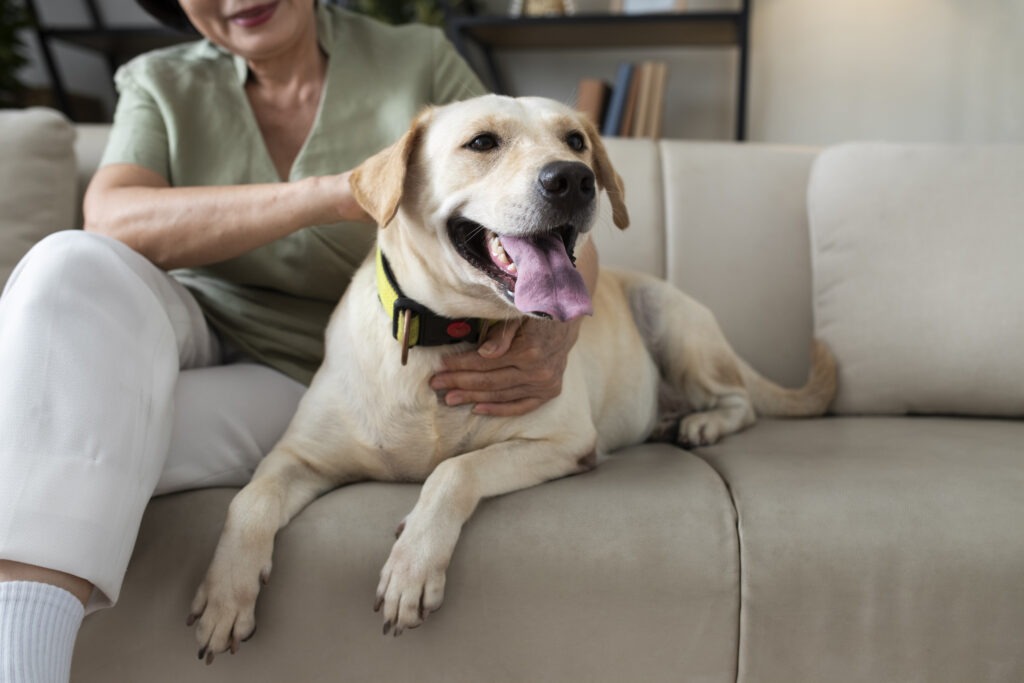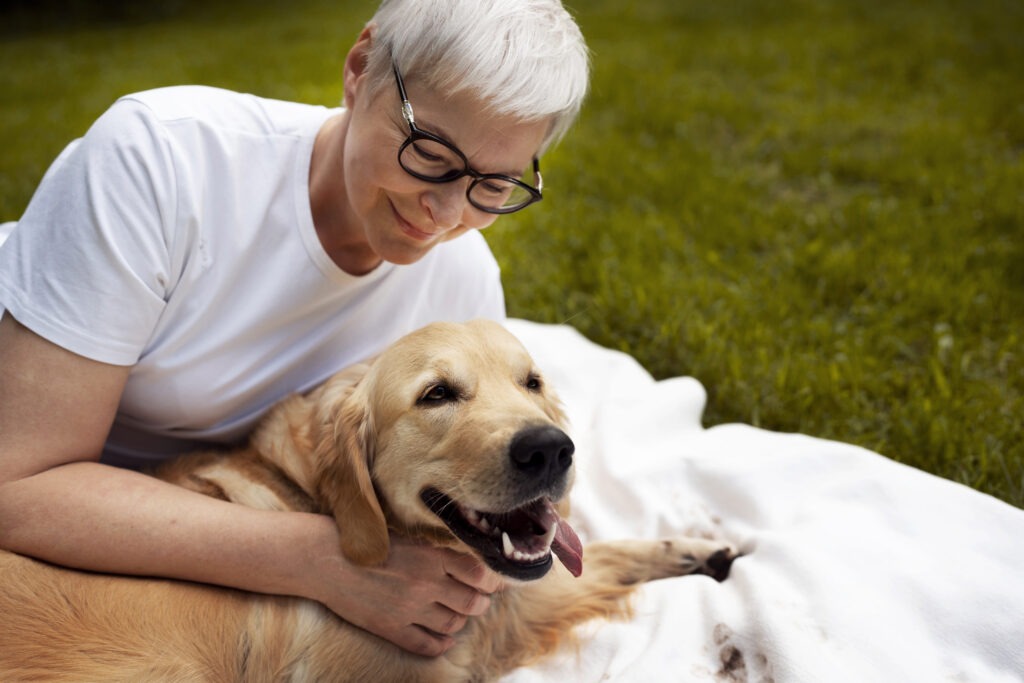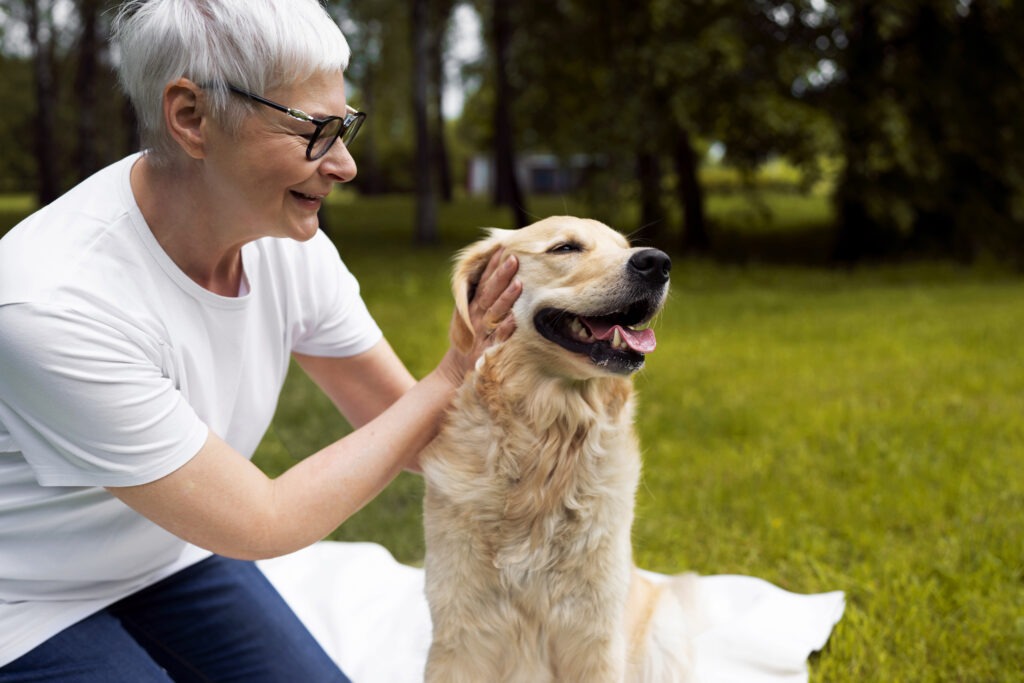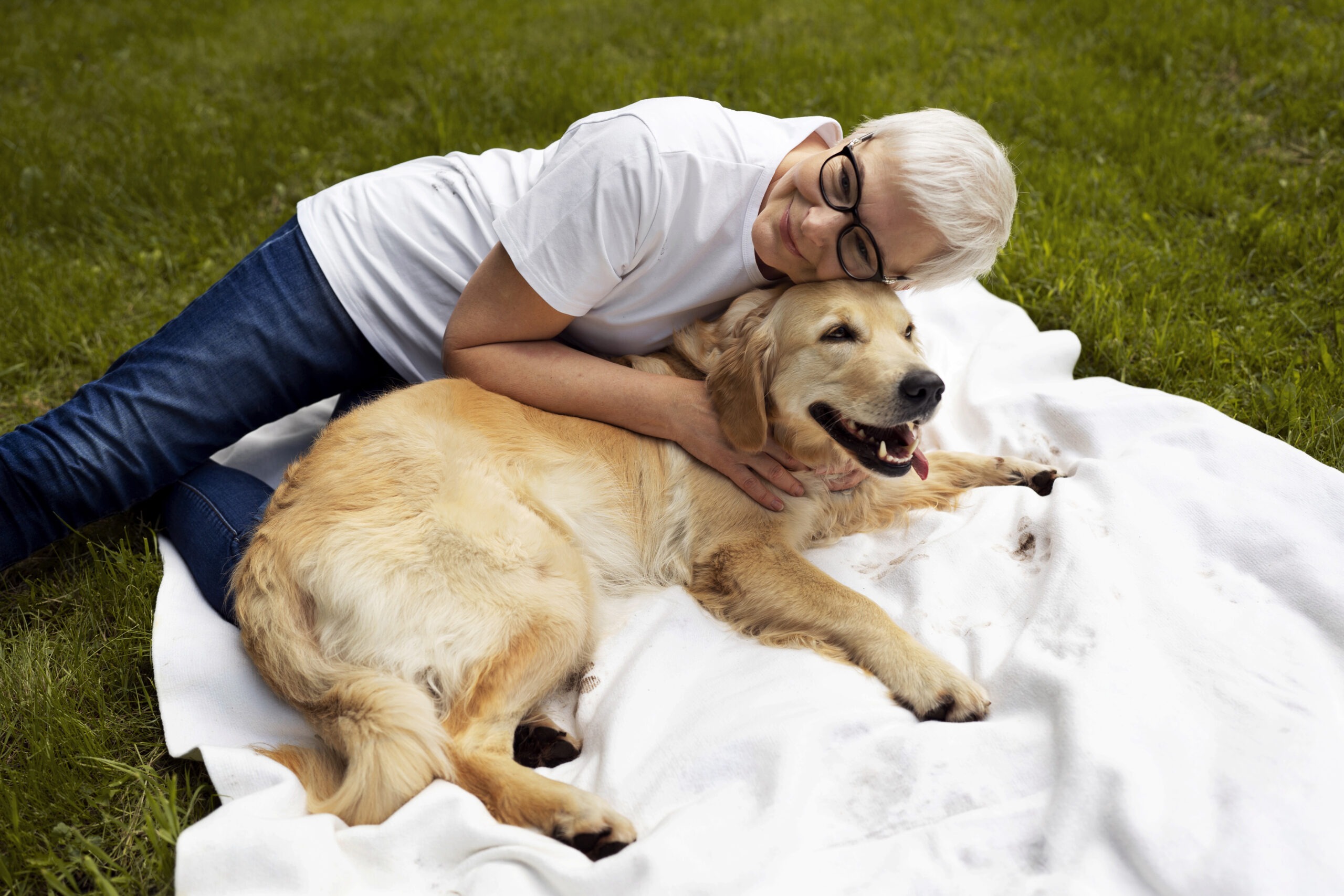Imagine your best friend in the whole world, your dog, is acting a little strange. They may appear somewhat confused or slightly frightened. Then, all of a sudden, their body starts to shake uncontrollably, their legs paddle in the air, and they fall over. It looks like a terrible short-circuit. Watching this happen to your loyal companion is one of the most frightening things you can ever see. You might feel scared, sad, and very, very confused. This is a seizure, and when it happens to an old dog, it’s a big, scary puzzle. You might be wondering, “Why are these senior dog seizures happening?” and wonder, “What can I actually do to help ?”
Take a deep breath. It’s okay to be scared. Lots of grown-ups and kids feel the exact same way. The most important thing to know is that a seizure is not a magic trick, and it’s not a punishment. It’s a medical problem, like a super-fast hiccup for the brain. And even though it looks terrible, we can learn all about it together. In this guide, we’ll talk about what senior dog seizures are, what to do when they happen, why they happen, and how you can be the best helper your old dog pal could ever ask for. We’ll answer all your questions about seizures in older dogs in a way that’s easy to understand.

What a Senior Dog Seizures Is (And Isn’t!)
Think of your dog’s brain like a super-duper amazing computer. It sends little electrical messages to all parts of their body to tell them what to do—walk, wag their tail, or even bark at the mailman. A seizure is like a sudden, big, messy short-circuit in that computer. All the messages get scrambled, and the body does things it can’t control.
Is it painful? ** This is a question many people often ask. The good news is, no! During a seizure, your dog is not conscious. They are unconscious, like they’re in a very short, strange dream. They don’t feel any pain while it’s happening, so that’s a big relief. The scary part is just for us, not for them. Understanding this can help you feel less scared when you see one of the senior dog seizures.
A seizure has three parts:
- The “Weird Feeling” Part (Aura): Before the seizure even starts, your dog might act strange. They might hide, stare at nothing, or come to you for extra cuddles. This is a little warning sign that their brain is getting ready for a short circuit. Not all seizures in older dogs have this part, but sometimes they do.
- The “Shaking” Part (Ictal): This is the part that looks the most scary. Your dog might fall over, their legs might paddle in the air, their body might get stiff, and they might drool or even pee without meaning to. This part of the seizure for senior dog seizures usually only lasts for a few minutes.
- The “Confused” Part (Post-Ictal): After the shaking stops, your dog will be very confused. They might stumble, walk in circles, or bump into things. They might seem sleepy or very thirsty. This part can last for a while, as their brain is still rebooting after the senior dog seizures.
Knowing these parts can help you understand what’s happening and how to help your dog after one of these scary seizures in older dogs.
The Most Important Things to Do During Senior Dog Seizures
Watching your dog have a seizure is a very big moment. Your heart will beat fast, and you might want to hug them and make it stop. But the most important job you have is to stay calm and keep them safe. What should I do during a seizure? Here are the simple steps to follow.
- Stay Calm! Your dog can sense how you’re feeling. A calm voice and a calm body can help them feel safe after the seizure is over. It’s the most effective way to support a dog experiencing senior dog seizures.
- Clear the Area! Look around and gently move anything they could bump into. A coffee table, a chair, or a toy could hurt them. Your job is to make a little safe zone around them. This is the top tip for any kind of seizures in older dogs.
- No Touching! ** Keep your hands away from their mouth. They can’t swallow their tongue, and you could get hurt by accident. Just let the seizure run its course. It’s a natural part of these senior dog seizures.
- Time It! Use a phone or a clock to see how long the seizure lasts. This is extremely important information for the vet to know. The length of these seizures in older dogs tells the vet a lot.
- Make a Movie! If you can, use a phone to take a short video. It might seem strange, but it helps the dog detective (the vet!) a lot. They can see what the seizure looked like, which is a super helpful clue for solving the puzzle of senior dog seizures.
After the seizure is over, just speak to your dog in a soft, calm voice. They will be confused, and hearing your loving voice will help them feel safe. This is a key part of caring for your dog after experiencing a bout of senior dog seizures.

The Dog Detective: Why Are They Happening?
After the seizure, you’ll have so many questions. Why is my senior dog having seizures? Is it common for senior dogs to experience seizures? The answer to the second question is no, it’s not normal. It’s a sign that we need to play detective and figure out the reason. The reason for these senior dog seizures is almost always an underlying health problem. Here are some of the things the vet detective will look for to figure out the cause of seizures in older dogs.
- Brain Bullies (Brain Tumors): Imagine a little bully moved into a part of your dog’s brain. This bully is a brain tumor. It takes up space and sends out mixed-up signals, causing the brain’s computer to short-circuit. Brain tumors are the most common reason for seizures in older dogs, especially when the seizures start for the first time in an old dog. The good news is, sometimes these bullies can be treated!
you may like – A Puzzling Concern: Why is My Senior Dog Losing Weight?
- The Body’s Engine Room (Metabolic Issues): Think of your dog’s body as a big engine. The engine requires clean fuel and properly functioning filters. The liver and kidneys are the filters. When they get old and tired, they might not clean the blood very well. Impure blood can transmit harmful signals to the brain, potentially triggering a seizure. This is a common reason for senior dog seizures. Other engine problems, like low blood sugar (if a dog has diabetes), can also make the brain short-circuit. These kinds of seizures in older dogs are a sign that the body’s filters need some help.
- Brain Hiccups (Strokes): A seizure can also happen if a tiny blood vessel in your dog’s brain gets blocked or breaks. This is like a tiny hiccup for the brain, and it can leave a little scar. That scar can then cause an electrical short-circuit later on, leading to senior dog seizures. This is another reason for sudden seizures in older dogs.
- A Lifelong Problem (Idiopathic Epilepsy): Some dogs have seizures their whole lives, starting when they are young. This is called idiopathic epilepsy. If your dog has had seizures before, their senior dog seizures might just be a continuation of that problem. But if it’s the very first time for one of these seizures in older dogs, it’s super important to play detective with the vet to find the new reason.

What Happens at the Vet’s Office?
Is it necessary to take my senior dog to the vet after a seizure? Yes, absolutely. You should call the vet right away, even if the seizure was short. A seizure in an old dog is never normal. The vet is the best person to help you solve the mystery of senior dog seizures.
- The Vet Detective’s Tools: Your vet will ask you lots of questions about what you saw. This is where your video and notes will be a huge help! Then, they will use their special tools to look for clues about the senior dog seizures.
- Blood and Pee Tests: These are like checking the car’s oil and fluid levels. They can tell the vet if the liver or kidneys are working well. They are a great way to start looking for the cause of seizures in older dogs.
- Special Brain Pictures (MRI/CT Scan): If the blood tests don’t give a clear answer, the vet might recommend a special picture of your dog’s brain. This is called an MRI or a CT scan. It’s like a secret map of the brain that can show if there’s a bully (tumor) or a brain hiccup (stroke) causing the senior dog seizures. This is the best way to find the cause of seizures in older dogs.
Where do I go for help? Start with your regular vet. They are great detectives! But sometimes, they might send you to a special detective who only works on dog brains. That person is called a veterinary neurologist. They are experts on senior dog seizures.
Living with Seizures: How to Help Your Senior Dog Every Day
Once you have an answer from the vet, you can start a plan to help your dog. How do you treat seizures in older dogs? The goal is to make the seizures happen less often, or even stop them completely, and give your dog a happy life.
- Seizure Shields (Medicine): If your dog needs medicine, think of it as a shield for their brain. The medicine helps keep the electrical short-circuits from happening. The most important thing about seizure medicine is that you have to give it every single day at the same time. If you miss a day, the shield might get weaker, and it could cause another seizure. The medicine is a great way to manage senior dog seizures.
- A Calm Home: Old dogs love peace and quiet. A calm, regular routine can help a dog with seizures in older dogs feel safe and happy. Try to avoid loud noises or big changes, as these can sometimes be a trigger for seizures.
- A Seizure Diary: You can be a super helpful part of your dog’s care by keeping a diary. Every time a seizure happens, write down the date, time, and how long it lasted. You can show this to your vet, and it helps them know if the medicine is working. This is a very constructive thing to do for a dog with senior dog seizures.
- Do senior dogs have different types of seizures? Yes. Just like we talked about, they can be full-body (called generalized) or just a little twitch (called focal). The type of seizure can give the vet clues about what’s happening. Your description of the senior dog seizures helps the vet understand the type.
- Is a single seizure a problem for an old dog? Yes. Unlike in a young dog, where one seizure might not be a huge worry, for an old dog, it’s a big sign that something is wrong. You should always talk to your vet about any seizures in older dogs.

A Final, Loving Word
Seeing your dog experience a seizure can be a frightening and serious situation. But with your love and a little help from the vet, you can make a plan to help your best friend. A seizure is a medical problem, but it is not the end of the story. With the right care and lots of love, a dog with senior dog seizures can still have a wonderful, joyful life. You are a great helper, and with your help, your old dog pal can be happy and safe. Remember, seizures in older dogs are a challenge, but you can face it together.
Frequently Asked Questions (FAQ)
What to do when a senior dog has a seizure?
Stay calm and gently move objects away to prevent injury. Do not touch your dog’s mouth or try to restrain them.
What to give my dog after a seizure?
Offer a small amount of fresh water and give them a quiet space to recover. Avoid giving food until they are fully alert and their appetite has returned.
How to stop seizures in dogs?
You cannot stop a seizure once it has begun. Management involves a vet-prescribed treatment plan to control future episodes.
What triggers dog seizures?
Common triggers include underlying medical issues like brain tumors or liver disease. Some dogs are also triggered by stress, certain sounds, or even specific foods.
When to put a dog down with seizures?
This difficult decision is made with your vet when seizures can’t be controlled, causing a poor quality of life. The choice is based on the dog’s well-being and happiness.
Will a dog be ok after a seizure?
Most dogs recover but will be confused and disoriented afterward. It’s vital to seek a vet checkup to find the cause and manage future seizures.
